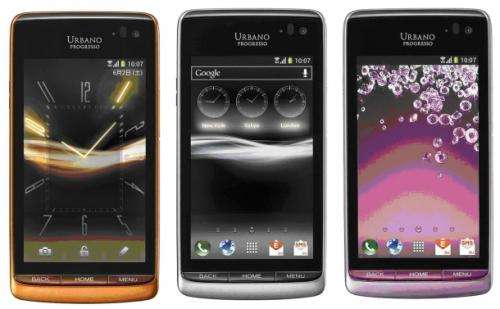May 17, 2012 report
Kyocera releases smartphones for easy listening

(Phys.org) -- "Can you hear me? You’re dying? Oh, you're drying. Are you talking into your phone?" While smartphones continue with noisy attempts to deliver stunning visuals and entertaining apps, the fundamental problem of hearing a phone caller properly remains a less strident but universal pain. Kyocera, for one, is a company that wants to be a hero in commercializing smartphones with improved sound quality. This week, Kyocera is introducing smartphones in Japan that carry its special bone conduction system technology.
Its Kyocera Urbano Progresso model, for example, is a nonspeaker phone that uses the bones in a person’s head instead of speaker to deliver sound to the ear. When you hold a device to your ear or head, the sound bypasses the eardrum and puts those vibrations into your inner ear, says the company.
Kyocera has introduced two phone models carrying this special technology, which deliver the phones’ voice reception via vibration of the display screen rather than speaker grille.
The technology makes the entire front of the device vibrate and propagates sound waves to the user’s ear. As the phones do not require a front output speaker, a design advantage is that the phones also have a sleeker look. Nonetheless, the real advantages are being promoted as devices that can serve the needs of all phone users including the elderly and hearing-impaired.
Observers say phones with the technology can also gain special attention from those who need to work in noisy environments.
The Kyocera models introduced this week in Japan are the Urbano Progresso and the Kyocera K012 Simple Mobile Phone. The technology has been brought forward by Kyocera and Japanese carrier, KDDI. Those familiar with technology for the hearing impaired will recognize that Kyocera did not invent the approach; past attempts have been made to provide bone phones for the hearing impaired, but the system being used by Kyocera is based on its proprietary ceramic technology.
Features of the Android 4.0 Urbano Progresso include a four-inch OLED display, and an 8.1-megapixel camera. The K012 is a simple device, a basic flip-phone with a 5-megapixel camera and three-inch display. According to CNET, Kyocera may release its technology in the U.S. market within six to 12 months.
© 2012 Phys.Org


















